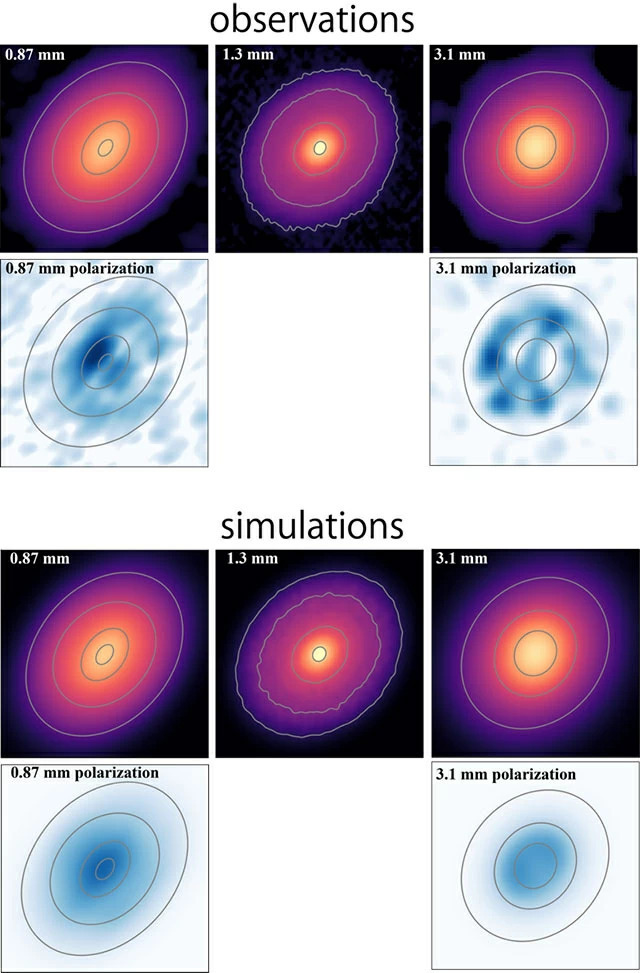Japanese astronomers discover the first step towards planet formation; Unveiling the secrets of protostellar disks

A research team led by Project Assistant Professor Satoshi Ohashi from the National Astronomical Observatory of Japan (NAOJ) has achieved a groundbreaking discovery about the formation of planets. They conducted high-resolution and multi-wavelength observations of a protoplanetary disk around a young protostar named DG Taurus (DG Tau). Through their study, they revealed the initial conditions of planet formation, which is crucial to our understanding of the origin of life and the formation of planetary systems. This fascinating finding will be explored in detail.
The formation of planets, such as Earth, is a fascinating and intricate process. Scientists propose that it occurs when interstellar dust and gas accumulate in a protoplanetary disk that surrounds a young protostar. However, the exact mechanisms and timing of planet formation remain unknown. To better understand this process, researchers have focused on studying protoplanetary disks where no planets have formed yet.
To further investigate this topic, a research team examined a young protostar called DG Taurus. They utilized the Atacama Large Millimeter/Submillimeter Array (ALMA) - an international astronomy facility, to observe the structure of the protoplanetary disk and analyze the amount and size of dust in it. Associate Professor Okuzumi from the Tokyo Institute of Technology also contributed significantly to this research.
The team's observations uncovered intriguing findings about the protoplanetary disk surrounding DG Taurus. Unlike older protostellar disks, this particular disk had not formed any ring-like structures, suggesting that it was in the early stages just before planet formation. The absence of such structures indicated that no planets were present yet. Consequently, this observation provided insight into the conditions preceding planet formation.
The study analyzed the radio emission intensity distribution at various wavelengths to estimate the size and density distribution of dust in the disk. The results showed that the dust had grown significantly in the outer part of the disk, beyond 40 astronomical units, which suggests a more advanced planet formation process in this region. Additionally, the dust-to-gas ratio was ten times higher than in normal interstellar space in the inner region, indicating a higher concentration of dust particles. These observations provided valuable insights into the accumulation of material necessary for planet formation.
The study's findings challenged existing theories of planet formation, which proposed that planet formation started in the inner part of the disk. However, observations of DG Taurus suggest that planet formation may start from the outer part of the disk, indicating a need for a reevaluation of current theories and a deeper exploration of the planet formation process.
The success of this study was possible due to the exceptional capabilities of ALMA. Its high spatial resolution of 0.04 arcseconds allowed for detailed observations of the protoplanetary disk, providing valuable information about the size and density of the dust. The detection of radio waves emitted by the dust, including polarized light, enabled the researchers to study the disk's characteristics in unprecedented detail. ALMA's contributions to this research highlight its vital role in advancing our understanding of the universe.
The study of planet formation is not only fascinating but also crucial for understanding how life originated. The interaction between protoplanetary disks and the necessary conditions for life brings up interesting questions about the existence of habitable environments in planetary systems. This study brings us closer to understanding the requirements for life to thrive by examining the initial stages of planet formation.
Exciting avenues for future research have opened up with the discovery of the first step toward planet formation in the protoplanetary disk around DG Taurus. Scientists will continue exploring the dynamics of protoplanetary disks and the processes that lead to planet formation. This knowledge will improve our understanding of the formation and evolution of our solar system and other planetary systems throughout the universe.
The groundbreaking study led by Project Assistant Professor Satoshi Ohashi and his international research team has provided significant insights into the early stages of planet formation. The team observed the protoplanetary disk around DG Taurus and captured the conditions before planet formation, shedding light on the complex processes involved. This research not only deepens our understanding of the origin of life but also paves the way for future discoveries in astrophysics. As scientists continue exploring the mysteries of the universe, we can look forward to uncovering more secrets about planet formation and the potential for life beyond Earth.

 How to resolve AdBlock issue?
How to resolve AdBlock issue?